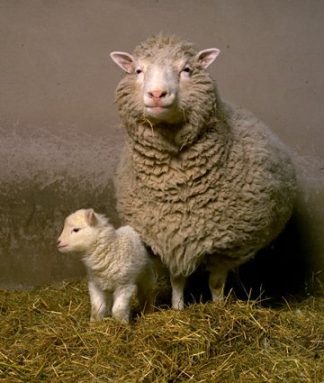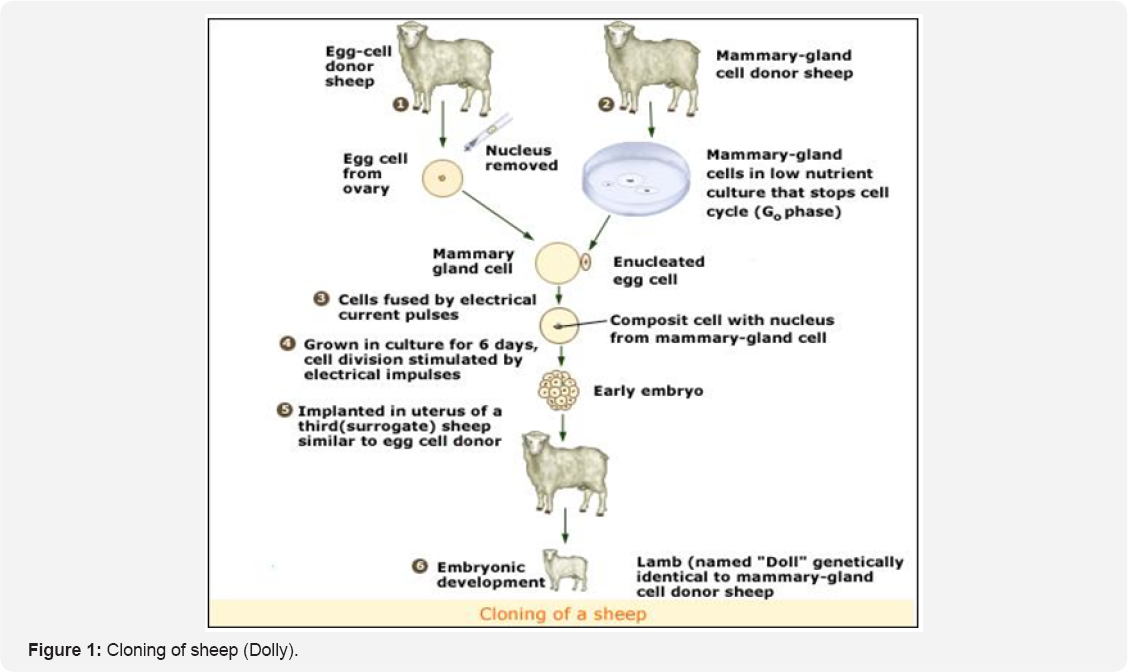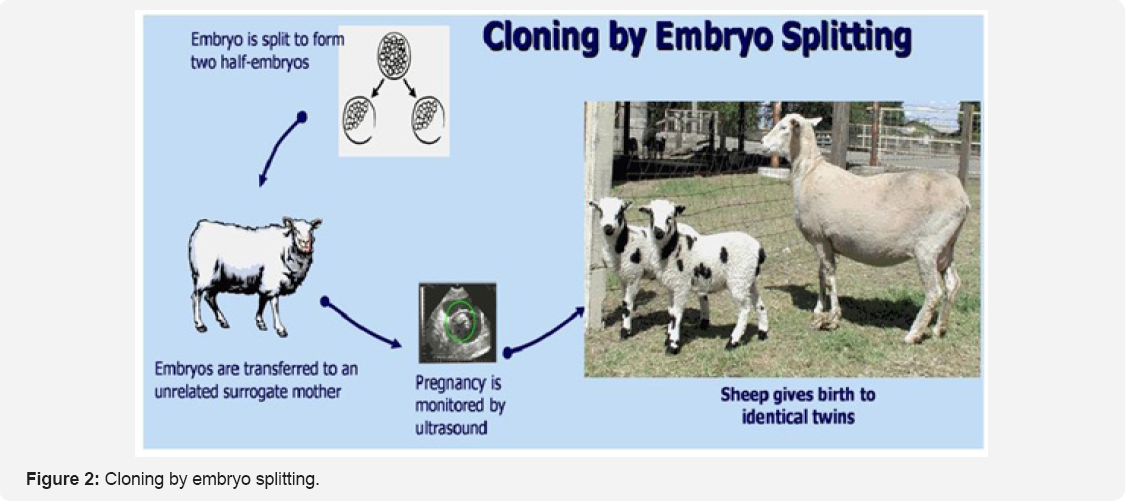Pampa a Jersey calf was the first animal cloned in Argentina by the company Bio Sidus in 2002. What Cloning Means to Consumers FDA has concluded that.

Cloning Reproductive Cloning Britannica
The importing of cloned animals their offspring semen and embryos from cloned animals or their offspring and meat or dairy products derived from cloned animals or their offspring.

Agriculture cloned animals. The Food and Drug Administration says meat and milk from clones of adult cattle pigs and goats are safe to eat. Scientists have the ability to clone animals. 15072015 Cloning animals can help in the production of drugs and protein needed in the field of medicine.
51 The cloning of elite farm animals and those used for. 50 Since then more than 20 animal species have been cloned including goats. 04032021 Cloned animals can be more fertile resist certain diseases and produce more of the products we use.
For example Final Answer was a naturally conceived bull so buff he became one of the most prolific sires of the Angus cattle breed. Both procedures are often done repeatedly to the same animals. The farming of cloned animals or their offspring.
The sheep for example are great sources of protein needed in the. In research GE animals may be produced using SCNT. 19022021 In agriculture clones of high-value breeding animals are being produced for breeding purposes.
This is the VOA Special English Agriculture Report. The placing on the market of meat or dairy products derived from cloned animals or their offspring. Following reports this week that cloned offspring are already being bred in the UK the Food Standards Agency FSA said there was no evidence that consuming.
The current technique used for animal cloning is somatic cell nuclear transfer SCNT. 04082010 An increase in the cloning of farmed animals will lead to a rise in welfare problems and threatens the long-term health of livestock breeds as genetic diversity declines say campaigners. 09012007 2007-01-09 US Agency Says Cloned Animals Safe to Eat.
Cloned animals tend to have a. 07062016 Cloning of animal is the key of development in field of agriculture and medical but it is acceptable only when the aims and methods are ethically justified and when it is carried out under ethical conditions. Nuclear cloning involves the production of animals that are genetically identical to the donor cells used in a technique known as nuclear transfer NT.
Our planet is flexible in its ability to sustain like but we are learning that our ecosystems have less elasticity. This involves the use of animals selected for such high yields and growth rates that they are vulnerable to damaging health problems. Cloning and GM are out of step with the growing recognition of the need to respect animals as sentient beings.
15012008 Dolly the sheep was the first animal to be cloned via the transfer of nuclei derived from mammary gland cells. Its important to remember that cloning does not manipulate the animals genetic make up nor change an animals DNA. An Anatolian Grey bull Efe was cloned in Turkey in 2009 and four female calves from the same breed Ece Ecem Nilufer Kiraz in 2010 by the Scientific and Technological Research Council of Turkey TBİTAK.
These animal clones are then used for conventional breeding and their sexually reproduced offspring become the food-producing animals. It is simply another form of assisted reproduction. Research Involving Cloning of Agricultural Animals Animal cloning is an assisted reproductive technology FDA 2008 similar to artificial insemination embryo transfer and in vitro fertilization.
03022021 This means to produce a handful of successfully cloned animals hundreds of other animals have their eggs harvested or are surgically implanted with embryos. An efficient animal cloning technology would provide many new opportunities for livestock agriculture human medicine and animal conservation. A common problem is that cloned animals are significantly bigger at birth than normal offspring.
Cloning and GM would take agriculture in the wrong direction perpetuating industrial. Weve discussed the ways that cloning fits into horticulture but what about animal agriculture. US says cloned animals safe for sale as food.
Agricultural animals such as goats cows and sheep are sources of protein. However cloning is not the most efficient way to produce production animals. Cloning animals would allow us to balance environmental habitats.
A cloned animal receives its mitochondrial DNA from the donor of the recipient egg and the nuclear DNA from the donor of the somatic cell nucleus and is therefore. Effectively removes the final regulatory barrier to selling cloned meat in the US it is likely to be years before cloned animals. If an animal becomes extinct or disappears because their habitat does not support life in needed ways then the outcomes in the local region can be very dramatic.
The United States government wants to know what the public thinks about its findings on the safety of cloned animals. 10032016 Cloning animals is a reliable way of reproducing superior livestock genetics and ensuring herds are maintained at the highest quality possible. Animals have the vast majority 99 of their DNA containing its genes in the cell nucleus and a minute fraction 1 in the mitochondria within cells but outside the nucleus.
Scientists are doing extensive research in animal cloning but now many ethical issues are raised.

Animal Clones Double Trouble Science News For Students

China S Cloned Cows Meat On The Table Or Environmental Disaster Jian Yi The Guardian

Is A Clone A Copy Equine Science Center

Open Accessjournals List Of Open Access Journals Juniper Publishers

Center For Food Safety Issues Animal Cloning
Https Ucanr Edu Sites Ucce Lr Files 156324 Pdf
Https Encrypted Tbn0 Gstatic Com Images Q Tbn And9gcsc6ddeyfrv8 An1oox93uv D4fdu2q6fhtfhg0iig7dlwnhjgh Usqp Cau

Open Accessjournals List Of Open Access Journals Juniper Publishers

E U Parliament Votes To Ban Cloning Of Farm Animals Science Aaas
0 comments:
Post a Comment